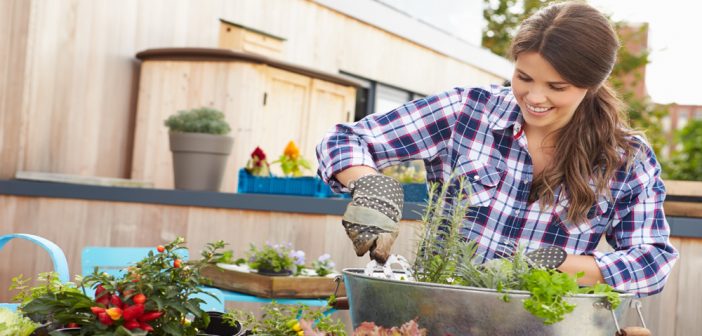Even if you don’t have a green thumb, you can have a spectacular garden that all your friends will envy. With just a few simple tips and tricks of the trade, you can have a thriving garden in no time. Here are a few expert tips to get you on the right track in creating a lovely garden.
Gardening by Region and Zone
One of the best ways to ensure that your garden is at its best is to plant by region. Planting by region help increase the survival rate of you plants and reduces landscape maintenance. Also, what thrives in one area does not necessarily mean it will thrive in another region. Starting plants indoors also gives a head start for plants that require a longer season.
One of the easiest ways to find out your hardiness zone is through the interactive USDA Plant Hardiness Zone Map. Simply select your state or enter your zip code in the search bar. You can also talk to someone in your local garden center about the best native plants for your region.
Get Your Soil Tested
The soil you use is one of the most important keys to having a successful garden. Soil is the base; it is where plants get their nutrients for growth and survival. Actually, every plant requires its own unique soil requirements. Plants flourish best in different pH levels; soil testing can help you determine what type of soil will ensure optimum growth.
There are several places you can get you soil tested such as at a university, college or at a nursery. You can also buy DIY testing kits at hardware stores.
Compost
Compost will improve the quality of almost any soil. It adds nutrients to the soil to encourage healthy growth. In fact, compost contains the three main nutrients for growing which is nitrogen, phosphorous and potassium. It also has special micronutrients that are very important – iron, manganese, zinc and copper.
Creating compost is quite easy. Save your food waste and “feed” it to the compost pile. Great products for compost include egg shells, coffee grounds, wilted lettuce, apple cores and other unwanted food items.
Grow Low Maintenance Plants
If you are new to gardening, it is best to start with plants that are easy to grow. Not only will your garden be more successful but it will be a lot less work. In addition, growing “low maintenance” plants encourages successful gardening that inspires more advanced techniques.
Some of the easiest plants to grow include vegetables like tomatoes, basil, cucumbers, peppers, onions, chard, greens, carrots, radishes, squash and beans. When it comes to low maintenance flowers the best choices are sweet peas, sunflowers, California poppy (Eschscholzia), Aquilegia, marigold, foxglove, Love in A Mist (Nigella), Fuchsias, clematis, Nasturtium, petunias, Pansy, dahlia’s, black eyed Susan’s and Hardy Geranium (Cranesbill).
Location
Once you decide on what you want to grow, determine the best location for your plants. For instance, some plants do best in full sun while other plants thrive in the shade. You can also determine which plants to grow by the type of garden beds you have. If you have numerous beds in full sun, plant good “full sun” border plants such as tomatoes, squash, Russian sage, yarrow, purple coneflower, Shasta daisy, asters, bee balm, lavender, verbena and other full sun plants. Plants that prefer shade include astilbe, foxglove, primrose, lettuce and various greens.
Before planting anything, make sure that you have the right location for the plant for the most favorable results. Keep your plants in a container until you decide on a location. If your plant does not like where you placed it, you can easily move it to a better location.
Watering
Water is essential for the growth and life of a plant. Although it may look simple, watering actually takes a bit of skill to do properly. Generally, you can start by knowing the soil type and the requirements for watering. However, watering does not have to be rocket science. Generally, it is best to soak the soil as opposed to light watering. Deep soaking actually guides the roots to move deeper into the soil. With light watering, roots generally stay close to the surface leaving the plant more vulnerable to drought.
It is also important to avoid getting water on the leaves, especially if you live in a more humid climate. Wet leaves can encourage mold and mildew and thus weaken or kill your plants. Knowing how much to water a plant comes with experience. However, a good rule of thumb is if the plant is wilting then it probably needs water, it the leaves are turning brown then it has most likely has been over watered. Another helpful tool is an inexpensive rain gauge. It is a cost effective way to keep track of how much water your plants are getting.
Keep a Notebook
When it comes to gardening, one of your greatest resources is your notes. A journal of everything is vital for inspiration and the success of your garden. Take note of what you planted, when you planted it and all of the conditions such as type of soil, location etc. Knowing where you placed certain plants will also come in handy during spring clean-up.









